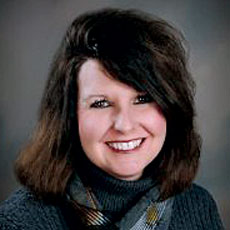
Recently, I went shopping for a suit. I had a rather large presentation on behalf of Pathway Health next week, which gave me leave to purchase something new. As always the salespeople at this particular dress store are friendly and outgoing – mostly hoping to make a sale. In an easy banter, a salesperson asked me what I do for a living. I explained to her that I am a gerontologist; someone who studies seniors and aging. She then asked, “Do seniors really get good care at nursing homes and assisted living facilities?” That question left me stunned and uneasy. The answer is as murky as a Minnesota lake in August.
Do our seniors truly receive the care that they deserve? I hemmed and hawed with the salesperson, not giving the answer that she was looking for.
On my ride home from the store, I sat and questioned my chosen field of almost twenty-five years. What in the world has happened to the field of senior care? Why does senior care always receive such a bad rap? Not all nursing homes and assisted living facilities are bad. But then again, not all nursing homes and assisted living facilities are good either. Why is there such a divergence in senior care when state and federal regulations are pretty much the same across this great country of ours? I finally surmised the answer to my question as being the individual, organizational prioritization of how monies are spent. Senior care is now about fiscal priorities – bottom line.
With the ever looming effects of the Accountable Care Act, lessening reimbursement from state/federal governments and penalties to hospitals for readmissions (let us be very clear in that penalties to hospitals will ding the senior care industry), I am truly surprised that more senior care organizations have not closed their doors. Unfortunately, we will see more integrity driven, senior care organizations fold. This will be due in part to the inappropriate fiscal prioritization of non-integrity driven organizations punting to score Wall Street standings.
Without naming names, in a very recent and explosive documentary, a large assisted living organization was criticized due to the extremely poor care of its seniors. The case/example heard around the world embodied a single resident, of one assisted living facility, that did not receive a proper admittance screening, pressure wounds were not recognized nor addressed and the resident had continued falls. Her falls resulted in an untimely, emergency room death. What went wrong within the organization to have not recognized her basic needs?
I highly suspect that the prioritization from upper management was not that of training/teaching staff how to assess, identify and treat emergent health issues and resident needs. Purportedly this organization wanted to admit as many individuals as possible for revenue generation. This is a classic example of inappropriate organizational prioritization.
Business is business. Every organization must make money to continue operations. However, not enough funds are allocated for caregiver training fundamentals. For necessary training to occur, ‘systems’ must be in place. We should ask: With our industry’s ever changing regulations, day-to-day crisis management and extreme flux in staff turnover, how can we deploy staff and systems to provide excellent care? What resources do we have to assist with the delivery of exceptional care?
Andrea Swayne is the Pathway Health Director of Interim Management.




